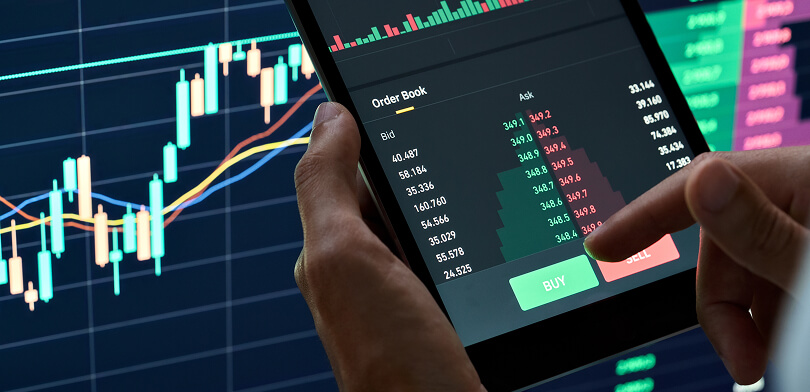- Last Updated: Apr 17,2024 |
- Religare Broking
In options trading, the concept of strike price plays a crucial role. The strike price, also known as the exercise price, serves as a reference point to determine the profitability and risk associated with an options trade. The significance of the strike price lies in its ability to determine whether an options contract is in-the-money, at-the-money, or out-of-the-money.
Understanding the strike price is vital for traders as it directly influences the potential gains or losses they can achieve in the options market. Let’s explore more.
- What is the Strike Price in Options?
- Example of Strike Price in Options Trade
- Strike Price of a Put Option
- Factors Determining the Strike Price: Market Conditions
- Strike Price vs Exercise Price
- Conclusion
Topics Covered:
What is the Strike Price in Options?
So, what essentially is strike price meaning? The strike price in options trading refers to the predetermined price at which the underlying asset can be bought or sold when exercising an options contract. It is a crucial reference point in determining the profitability and risk associated with an options trade.
When trading options, it is essential to understand the strike price as it directly impacts the trade outcome. The strike price determines whether an options contract is in-the-money, at-the-money, or out-of-the-money, which determines the potential gains or losses for the trader.
The strike price plays a significant role in options trading as it allows traders to make strategic decisions regarding risk management and optimise their trading outcomes based on market expectations.
Example of Strike Price in Options Trade
To understand how strike price functions in an actual options trade scenario within the Indian market, let's consider a hypothetical example: Reliance Tech Ltd.
Imagine that Reliance Tech Ltd is trading at ₹100 per share, and you are optimistic about its future performance. You buy a call option contract for Reliance Tech with a strike price of ₹110, expiring in one month. This contract gives you the right, but not the obligation, to purchase 100 shares of Reliance Tech at ₹110 per share within the next month.
For this option, you pay a premium of ₹5 per share, amounting to a total of ₹500. Now, let’s explore the possible outcomes at the contract’s expiration.
Must Read: Meaning of Demat AccountScenario 1: Stock Price Above Strike Price
If Reliance Tech's stock rises to ₹120 by expiration, your call option is in-the-money. You can exercise the option to buy shares at ₹110 each, though they’re now worth ₹120 in the market. Exercising the option would yield a profit of ₹1,000 (₹120 - ₹110 per share) minus the ₹500 premium, netting ₹500.
Scenario 2: Stock Price Equals Strike Price
Should Reliance Tech's stock be precisely ₹110 at expiration, your option is at-the-money. You can either exercise the option or let it expire. Exercising it means you break even, as the gain from the stock is offset by the premium you paid.
Read Also: What is a Call Option
Scenario 3: Stock Price Below Strike Price
If Reliance Tech's stock falls to ₹100 or lower at expiration, your option is out of the money. It's unprofitable to exercise the option, as buying shares in the open market would be cheaper. In this case, you'd likely let the option expire, resulting in a loss of the ₹500 premium.
This example shows the pivotal role of the strike price in options trading within the Indian market. Choosing a strike price aligned with your market predictions allows you to maximise potential gains and manage risks effectively in options trading.
Strike Price of a Put Option
When determining the strike price, several factors come into play. Firstly, the strike price is typically set based on the current market price of the underlying asset. This gives the buyer a clear reference point for potential profit or loss. The strike price should also be carefully chosen to align with the buyer's expectations of the underlying asset's price movement.
Strategic considerations are crucial in selecting an appropriate strike price for put options. One strategy is to choose a strike price below the underlying asset's current market price. This is an "in-the-money" put option, providing immediate intrinsic value. It offers protection against potential downside risk and allows for potential profit if the price of the underlying asset decreases.
On the other hand, selecting a strike price above the current market price, known as an "out-of-the-money" put option, allows for potential profit if the price of the underlying asset decreases significantly. However, the underlying asset must decline enough to cover the premium paid for the put option and any transaction costs.
Another strategic consideration is the time remaining until the option's expiration date. As time passes, the value of the put option may change, and the strike price should be selected based on the buyer's anticipated price movement within that time frame.
Factors Determining the Strike Price: Market Conditions
Market conditions are an important factor to consider when determining the strike price of an option. The current state of the market, including factors such as economic indicators, industry trends, and overall investor sentiment, can greatly influence the choice of strike price.
In a bearish market, where prices are expected to decline, a lower strike price may be selected to maximise potential profit from the downward movement. Conversely, a higher strike price may be chosen to capture potential gains in a bullish market, where prices are expected to rise.
Another significant factor that affects the determination of the strike price is market volatility. It refers to the degree of price fluctuations in the underlying asset. Higher volatility can lead to larger price movements and increased potential for both profits and losses.
When volatility is high, option buyers may opt for a strike price that is further out of the money to capitalise on potential market swings. On the other hand, in periods of low volatility, option buyers may choose to strike prices closer to the current market price for a higher probability of profit.
Strike Price vs Exercise Price
In options trading, strike price and exercise price are two terms commonly used, but they differ in their specific meaning and application.
The strike price, also known as the exercise price, represents the predetermined price at which the underlying asset can be bought or sold. It is set when the option contract is created and remains constant throughout the option's life.
On the other hand, the exercise price refers specifically to the price at which the option holder can exercise their right to buy or sell the underlying asset. While they are often used interchangeably, it is important to note that the strike price is used more generally, while the exercise price is specific to exercising the option.
Recommended Read : Understanding Options Trading
Despite these differences, strike and exercise prices play a crucial role in options trading, determining the potential profitability and risk associated with the options contract.
Conclusion
To effectively navigate options trading, one must comprehensively understand various crucial elements. Among these, the strike price holds significant importance. Throughout our exploration of strike and exercise prices, we have recognised that the strike price acts as a fundamental reference point for options traders. By developing this knowledge, investors can enhance their ability to make strategic choices and navigate the dynamic landscape of options trading with confidence and precision.
Open Demat Account Today and Start Trading with Confidence!











